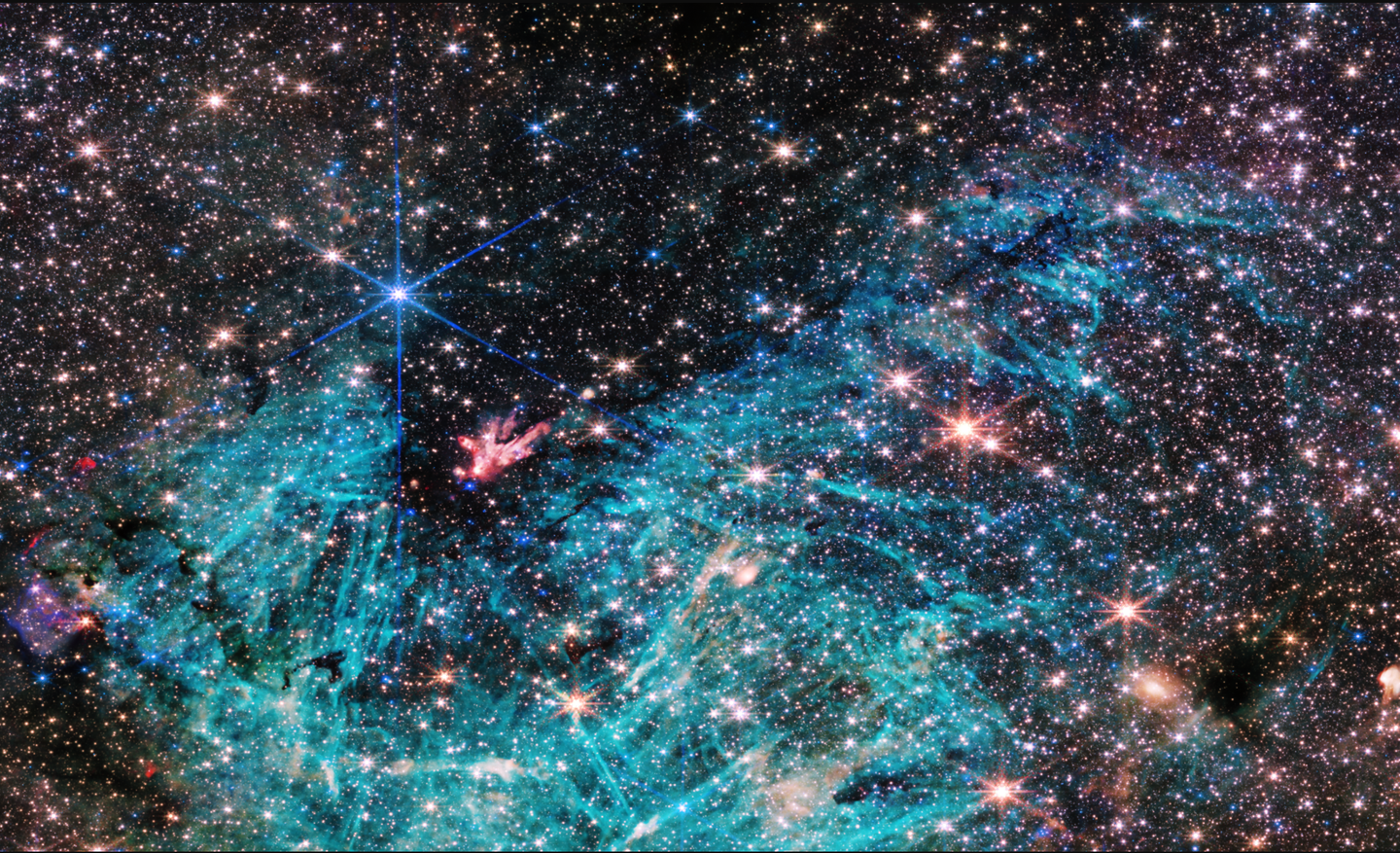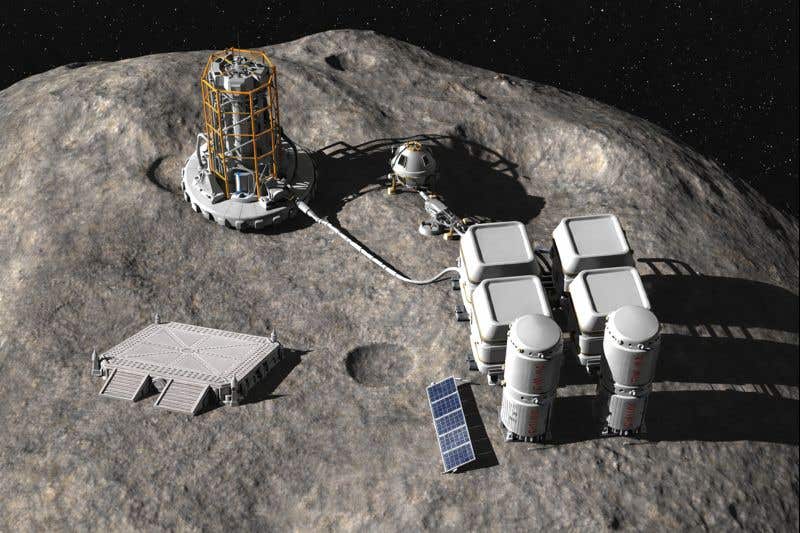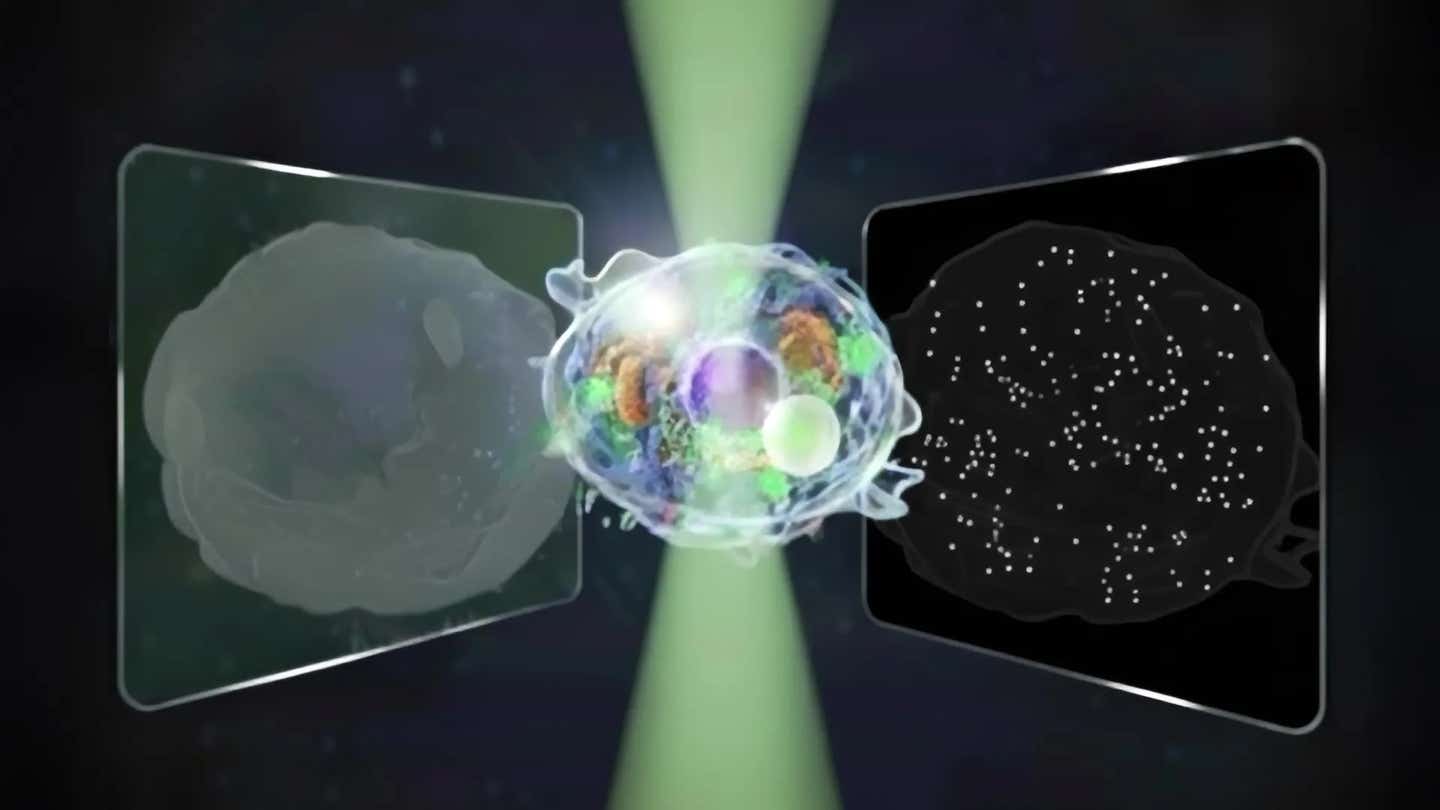Scientists crack the mystery of galactic filaments and magnetic fields at the heart of the Milky Way
New study reveals how magnetic fields shape Sagittarius C, fueling star birth and cosmic filaments in the Milky Way’s heart.

Magnetic fields, stellar winds, and cosmic filaments are rewriting what we know about star formation and galactic evolution. (CREDIT: NASA, ESA, CSA, STScI, and S. Crowe (University of Virginia))
At the heart of the Milky Way lies a turbulent, densely packed environment known as the Central Molecular Zone, or CMZ. This region is rich with gas, dust, and massive star formation, making it one of the galaxy’s most extreme laboratories. Within it sits Sagittarius C, or Sgr C, a bright and active site that has long fascinated astronomers for its tangled network of clouds, filaments, and radio emissions.
A new study led by Roy Zhao, a doctoral student at the University of Chicago, is shedding fresh light on this complex region. Zhao and his team focused on measuring magnetic fields in Sgr C, a task that has challenged astronomers for decades due to the area’s chaotic nature.
By analyzing data gathered with NASA’s now-retired Stratospheric Observatory for Infrared Astronomy (SOFIA), they were able to map the hidden magnetic structures shaping this corner of our galaxy. Their work, published in The Astrophysical Journal, offers new insight into how magnetic fields influence star formation, the behavior of interstellar clouds, and even the mysterious filaments of high-energy particles that thread through the galactic center.
A Flying Telescope and Polarized Starlight
The breakthrough came thanks to a unique observational approach. SOFIA, a modified Boeing 747 carrying a large telescope, was used to capture infrared light at a wavelength of 214 microns. This type of light is emitted by dust grains floating between the stars. Because these tiny particles tend to align with magnetic fields, the light they release is polarized—its waves are oriented in specific directions. By measuring the polarization, Zhao’s team could trace the direction and strength of magnetic fields threading through Sgr C.
“Dust grains act like little compasses,” Zhao explained. “By studying their light, we can reconstruct the magnetic field lines they align with.”
The team applied a modified version of the Davis–Chandrasekhar–Fermi method to estimate field strengths. What they found was a dramatic variation depending on location. In areas with intense turbulence, the fields measured only about 30 microgauss, while calmer regions with more orderly structures reached as high as 400 microgauss. To put that in perspective, Earth’s magnetic field is roughly 50 microgauss at the surface, meaning parts of Sgr C are almost ten times stronger.
Related Stories
- Milky Way’s center contains fewer stars — and now we know why
- The Moon once had magnetic fields as strong as Earth’s
A Bubble of Hot Gas and Young Stars
The observations revealed that the magnetic field wraps around an enormous bubble of hot, ionized gas in the center of Sgr C. This bubble likely formed from the powerful stellar winds of massive young stars, which pushed out surrounding material. The compression of gas and dust not only shaped the magnetic field but also accelerated the dense clouds along its edges.
Even more intriguing was the way the magnetic field lined up with emissions from ionized carbon atoms, known as [C II] lines, observed in earlier surveys. This overlap confirmed that the bubble’s expansion was directly tied to stellar activity. At its heart, the researchers identified a Wolf-Rayet star, a rare and extremely luminous star in its final life stage, which may have been responsible for blowing the bubble.
For Zhao, seeing how neatly the pieces fit together was a highlight of the project. “It was very satisfying to find that our measurements of the magnetic field matched perfectly with independent observations of the region,” he said.
Solving the Filament Puzzle
Sgr C isn’t just home to star-forming clouds and ionized bubbles—it also hosts a peculiar set of features that have puzzled astronomers since the 1980s: nonthermal radio filaments. These long, threadlike structures extend for light-years and glow with radio waves as electrons race along them at nearly the speed of light.
Mark Morris, Zhao’s collaborator and a professor emeritus at UCLA, was one of the scientists who first discovered these filaments decades ago. Since then, countless theories have been proposed to explain their origin, from shock waves driven by stellar winds to interactions with supernova remnants.
The new study points strongly toward one of the leading ideas: magnetic reconnection. This process occurs when two magnetic fields of opposite direction snap and reconnect, releasing energy and hurling particles outward. Zhao’s data showed that the geometry of the magnetic field near Sgr C’s filaments fits perfectly with this mechanism, offering the strongest evidence yet that reconnection is powering these enigmatic structures.
Lessons from a Galactic Rosetta Stone
The team calls Sgr C an astrophysical “Rosetta Stone” because it provides a rare chance to see three key components—cold molecular clouds, star-forming regions, and magnetic fields—interacting in real time. By studying how these pieces fit together, scientists can better understand not just the Milky Way, but galaxies across the universe.
In the CMZ, magnetic fields appear to play a dual role. On one hand, they prevent clouds from collapsing too quickly under their own gravity, which helps explain why the star formation rate near the galactic center is lower than expected despite its high density. On the other hand, magnetic reconnection and compression around stellar bubbles inject energy into the environment, fueling high-speed electrons and shaping the evolution of the region.
“These interactions are teaching us how galaxies regulate themselves,” Zhao said. “They’re like a balancing act between collapse and expansion, chaos and order.”
What Comes Next
While the SOFIA data provided an unprecedented look at Sgr C, it was limited to a single wavelength that primarily traces cold dust. To paint a complete picture, astronomers will need observations at additional wavelengths that probe warmer material heated by stars. Zhao hopes future instruments, such as the James Webb Space Telescope and next-generation infrared observatories, will expand on this work.
Despite Sgr C’s importance, it has historically received far less attention than Sagittarius A*, the supermassive black hole dominating the galaxy’s center. Zhao and his team believe the region deserves more focus, as it offers a dynamic laboratory to study the raw ingredients of star formation and cosmic magnetism.
Past Studies and Findings
Magnetic fields in the galactic center have long intrigued astronomers. In the 1980s, researchers like Morris first documented the striking radio filaments, sparking debates about their origin. Later surveys, including those with the Submillimeter Polarimeter for Antarctic Remote Observations, the Planck satellite, and the Atacama Cosmology Telescope, mapped the large-scale magnetic field of the CMZ. These studies suggested the field was relatively uniform, tilted about 20 degrees from the plane of the galaxy.
However, the resolution of those instruments wasn’t fine enough to resolve individual clouds, leaving many questions unanswered. High-resolution efforts, such as work by D. T. Chuss and X. Lu, revealed correlations between cloud density and field orientation but covered only small patches of the CMZ.
Other studies proposed that turbulence, shear forces from orbiting material, or compression from expanding bubbles could twist magnetic fields into the patterns seen today. The FIREPLACE survey, which Zhao’s study draws from, was designed to fill in the gaps by providing both high resolution and wide coverage.
Together, these findings highlight the role of magnetic fields not just as passive players, but as active architects of galactic evolution.
Practical Implications of the Research
Beyond satisfying scientific curiosity, this work has real implications for understanding the broader cosmos. By studying how magnetic fields regulate star formation in extreme environments, researchers can better predict how galaxies evolve over billions of years. The mechanisms at play in Sgr C—magnetic reconnection, stellar winds, and cloud compression—may also be shaping galaxies far beyond the Milky Way.
Closer to home, this research improves our grasp of cosmic magnetism, an invisible force that influences everything from the birth of stars to the behavior of cosmic rays. It also helps refine models of how high-energy particles move through space, knowledge that is important for space exploration and understanding radiation hazards.
Note: The article above provided above by The Brighter Side of News.
Like these kind of feel good stories? Get The Brighter Side of News' newsletter.



